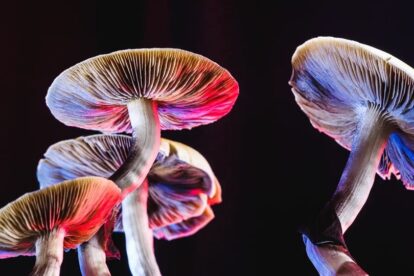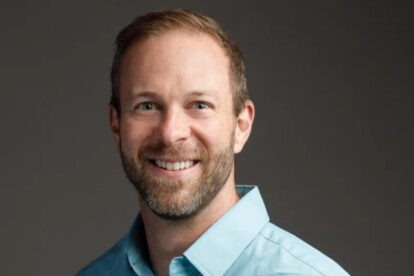Deconstructing the Skepticism That Surrounds Seasonal Affective Disorder

Recent research has shed doubt on the validity of Seasonal Affective Disorder as a mental illness, suggesting that it’s nothing more than a cultural construct. Yet an analysis of the origins and treatments of this illness reveal that our cultural skepticism surrounding it might be misguided, highlighting the need to change our perceptions of the unknown and embrace the fact that Seasonal Affective Disorder impacts the lives of many—whether or not we fully understand why.
If you live with Seasonal Affective Disorder (SAD), seasonal change may bring you waves of sadness and melancholy. For Neal Owens, it certainly did. Despite SAD’s inclusion in the DSM-V, a study conducted early last year has called its validity into question, suggesting that cultural attention to the idea over the past 30 years is the real root of the illness. While this cultural attention may have contributed to the prevalence of the diagnosis, it doesn’t negate the fact that many people really do suffer from depression during seasonal change. And, more importantly, arguing that the disorder is entirely a cultural construction certainly doesn’t serve people who live with mental health challenges.
Neal Owens’ boss was confused. For years, Owens—at the time a territory manager at apetroleum company in Maryland—was a top-performing employee in spring and summer. But when September came around, he was a different person, often arriving at work late (when he could get out of bed) and regularly missing deadlines and meetings.
Begin Your Recovery Journey.
877-727-4343Cultural Construct or Mental Illness?
Owens was a part of a series of clinical trials on SAD that took place at the National Institutes of Health. Some skeptics may say that his story is merely anecdotal, and that anecdotal evidence is nothing to peer-reviewed research; they may even go so far as to say that everyone gets a bit down during the winter. It’s a kind of rhetoric often used by those who least understand mental health—rhetoric that we should challenge. It’s critical that we make sure that the anecdotal evidence of people living with mental health challenges isn’t swept under the rug. Instead, we should use these personal experiences to guide our research and determine which directions to take it in.
The purpose of research is to serve people who live with mental health challenges, not work against them. If the current study found no evidence of the existence of SAD, let’s ask ourselves how this finding can be used to deepen our understanding of the experience of SAD—which is certainly real—rather than call its validity into question. If SAD “doesn’t exist,” then we need to think critically about what people like Owens are actually experiencing, and learn how to be better at supporting them in overcoming it.
Origins and Treatment of SAD
From what we know, somewhere between 10 and 20 percent of people with Major Depressive Disorder (MDD) experience it in a seasonal pattern. It’s likely linked to serotonin, the same chemical in the brain connected to a number of different mood disorders. So far, the most effective treatment for SAD has been light exposure therapy. It’s exactly what it sounds like: exposure to artificial light of specific wavelengths for a set amount of time per day. What’s important about the therapy is that it’s been proven that it works—regardless of exactly how. Maybe it restores something that the body lacks, and maybe it just helps people to know that they’re doing something to combat the intense sadness they feel whenever winter rolls around. Regardless of how it works, it helps people cope with their mental health challenges, and it validates that they’re struggling with something real and tangible in the first place.
Call for a Free Confidential Assessment.
877-727-4343Unpacking the Skepticism Surrounding SAD
So why, when there’s ample amounts of research—as well as anecdotal evidence—to support its existence, is there so much skepticism around Seasonal Affective Disorder? The answer is an easy one: stigma. Everyone experiences changing seasons, and most people do so without any changes or disturbances in mood. The idea that someone can’t function, can’t make it into work, and can’t manage their daily commitments because of the weather might seem unimaginable to someone who isn’t experiencing SAD. Add to that the fact that mental health challenges are largely invisible, and it makes sense why their existence is called into question so often. But the truth is that it doesn’t matter whether SAD is a “real” illness or not—it’s real to the people who experience it, whether it’s culturally constructed or based in some kind of physiology. The fact is that people get sad during seasonal changes, and they deserve support regardless of those factors.
Changing Our Perception of the Unknown
When research stands against anecdotal evidence, it can be hard to stand up against it, but it’s critical that we do so because perceptions like these are far from innocuous. On the contrary, they threaten to marginalize those who experience SAD and prevent them from getting the care they need. If you’re living with SAD, your experience is real. It’s valid and it’s treatable. Know that you’re not alone, and that there’s help out there for you. With time, patience, and perhaps the support of a residential treatment program, you can learn to live with the effects of Seasonal Affective Disorder, and start seeing the bright spots in even the darkest sky.
Bridges to Recovery offers comprehensive residential mental health treatment for people living with Seasonal Affective Disorder. Reach out to learn more about how residential treatment can help you cope with depression in the face of changing seasons so that you can truly take hold of your recovery.
Lead Image Source: Unsplash User Daniel Bowman






